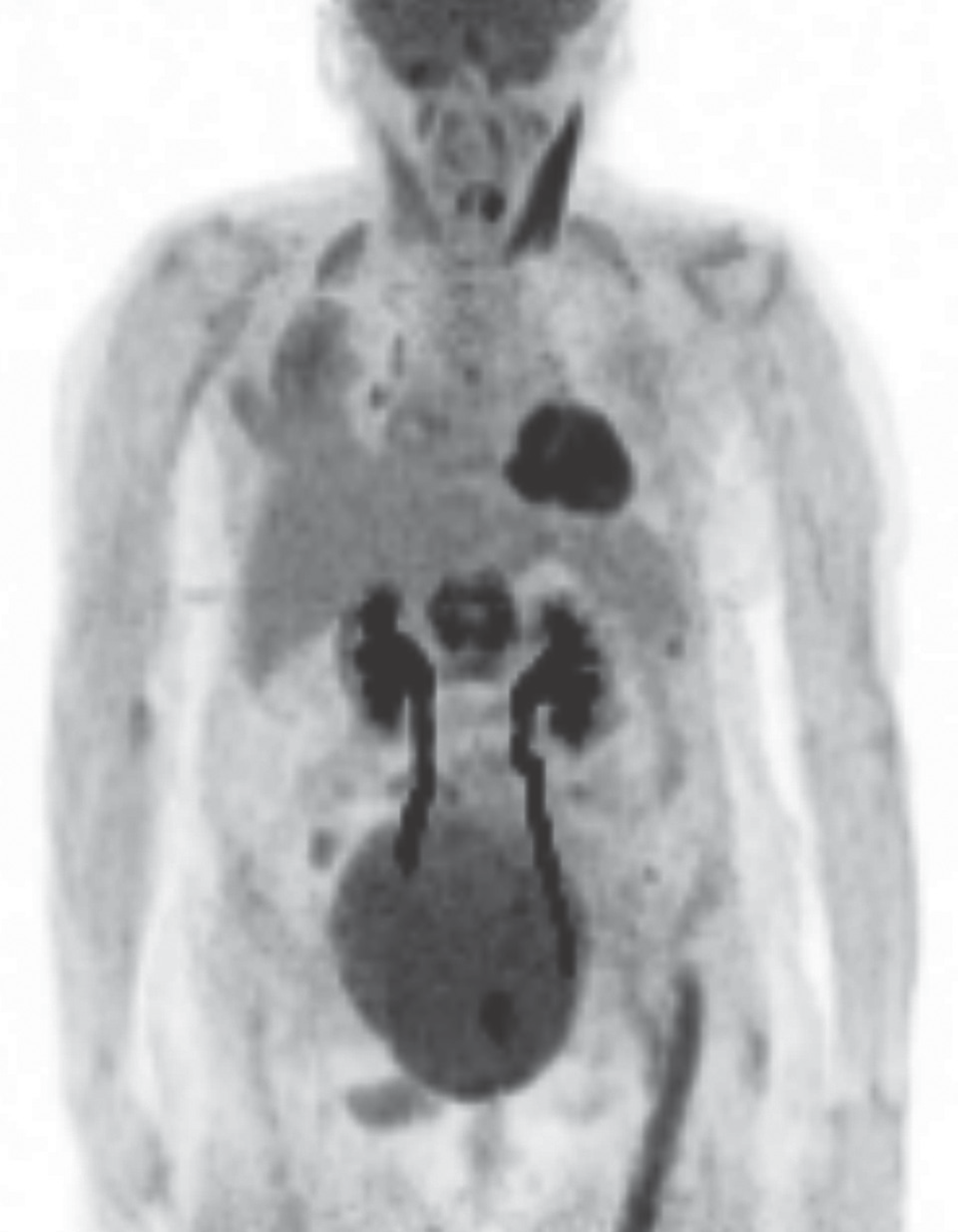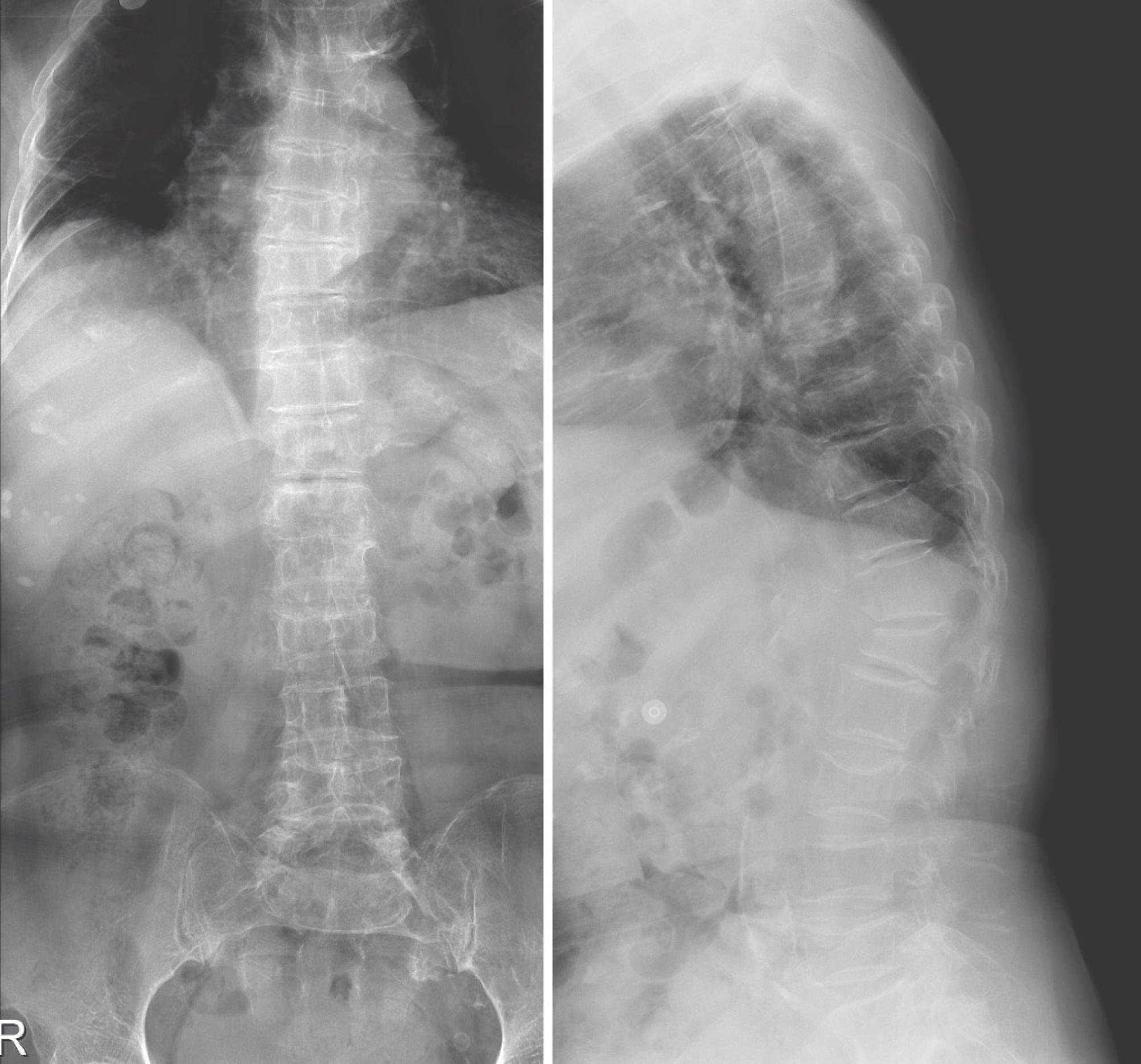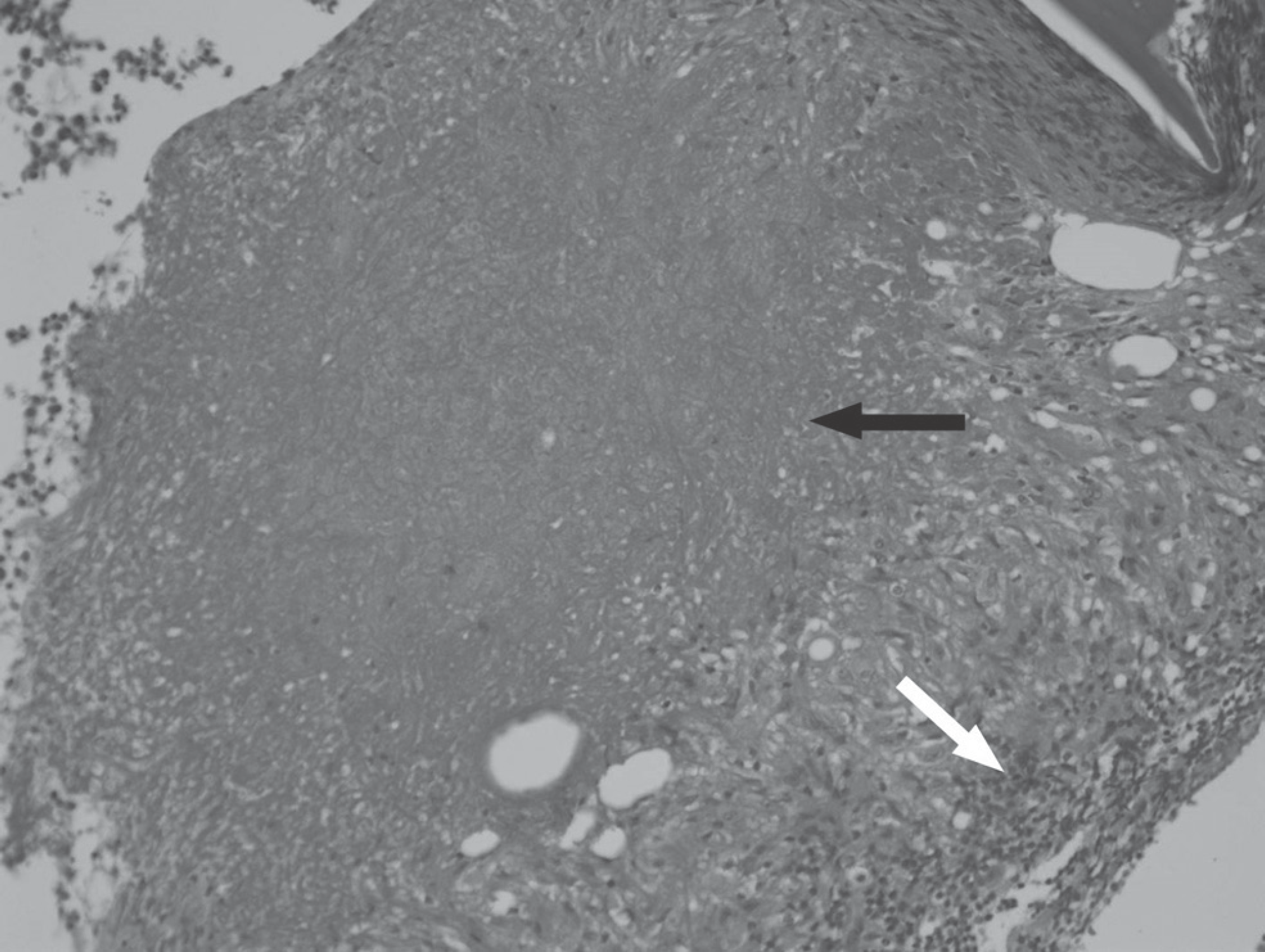Abstract
Objectives
To report the case of a patient whose preoperative imaging results seemed to show metastatic spine tumor but who actually had a vertebral pathologic fracture caused by spine tuberculosis.
Summary of Literature Review
Tuberculosis spondylitis is classified into peridiscal, central, anterior, and posterior spondylitis according to the portion involved, and central spondylitis can be mistaken as a tumor.
Materials and Methods
Imaging studies were performed in a 79-year-old female with progressive lower extremity weakness. We found a T12 pathologic vertebral fracture, which was suspected to be metastatic cancer.
REFERENCES
1. Joint committee for the development of guidelines for tuberculosis, prevention Kcfdca: Korea guidelines for tuberculosis first edition. 2011.
3. Currie S, Galea-Soler S, Barron D, et al. MRI characteristics of tuberculous spondylitis. Clin Radiol. 2011; 66:778–87.

4. Ha KY, Na KT, Kee SR, et al. Tuberculosis of the Spine: A new Understanding of an Old Disease. J Korean Soc Spine Surg. 2014; 21:41–7.

5. Jahng J, Kim YH, Lee KS. Tuberculosis of the lower lumbar spine with an atypical radiological presentation - a case mimicking a malignancy. Asian Spine J. 2007; 1:102–5.
6. Jeon CH, Yoon JK, Cho JH, et al. Usefulness of Fluorine-18 FDG-PET in the Diagnosis of Vertebral Pathologic Fracture. J Korean Soc Spine Surg. 2006; 13:191–9.

7. Golden MP, Vikram HR. Extrapulmonary tuberculosis: an overview. Am Fam Physician. 2005; 72:1761–8.
8. Dosanjh DP, Hinks TS, Innes JA, et al. Improved diagnostic evaluation of suspected tuberculosis. Ann Intern Med. 2008; 148:325–36.

9. Pai M, Riley LW, Colford JM, et al. Interferon-gamma as-says in the immunodiagnosis of tuberculosis: a systematic review. Lancet Infect Dis. 2004; 4:761–76.
10. Dewan PK, Grinsdale J, Kawamura LM. Low sensitivity of a whole-blood interferon-gamma release assay for detection of active tuberculosis. Clin Infect Dis. 2007; 44:69–73.
Fig. 2.
(A) A low signal in the bone marrow of T11 and T12, as well as cord compression can be observed in the T1-weighted magnetic resonance imaging (MRI). (B) The T2-weighted MRI demonstrates a low signal in T12 with cord compression. (C) The gadolinium-enhanced MRI shows en-hancement of the T11, T12, and L1 vertebral bodies and T12 bilateral pedicle with epidural soft tissue formation and dural sac compression.

Fig. 3.
The 18-FDG PET-CT results led to a suspicion of metastatic cancer due to a compression fracture in T12 with uneven hypermetabolic lesions in T11–L1.





 PDF
PDF ePub
ePub Citation
Citation Print
Print





 XML Download
XML Download